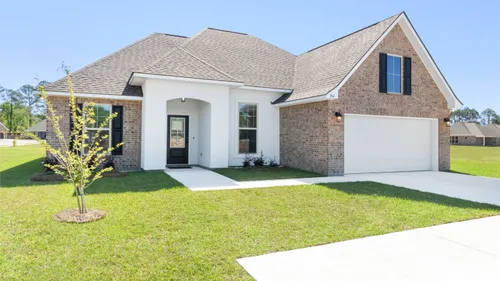Experienced General Contractor Indiana for Residential and Commercial Projects
Experienced General Contractor Indiana for Residential and Commercial Projects
Blog Article
How a General Professional Can Transform Your Common Areas Into Practical Spaces
The transformation of typical locations into practical spaces is a nuanced process that calls for a general specialist's knowledge in analyzing particular area needs and creating customized solutions. By thinking about variables such as layout, availability, and visual appeal, a specialist can create environments that not just offer practical purposes however additionally foster community engagement.
Assessing Current Common Location Requirements
When evaluating common locations, it is necessary to determine and comprehend the certain requirements of the community they offer. This procedure begins with an extensive analysis of current usage patterns, which involves gathering data on foot web traffic, height use times, and tasks occurring within these rooms. Involving with area participants via conferences or studies can provide valuable understandings right into their choices and obstacles.
Following, it is essential to take into consideration the group make-up of the area, consisting of age, way of living, and any type of special requirements that may affect how these areas are used. For example, families with young children might call for backyard, while older adults may focus on access attributes.
Additionally, evaluating the existing framework and services is vital. Determining locations that are underutilized or in demand of repair service can notify potential renovations. Working together with stakeholders, such as home supervisors and neighborhood organizations, ensures that the evaluation mirrors a detailed understanding of the neighborhood's needs.
Inevitably, a precise evaluation of present typical area needs lays the foundation for effective transformations, enabling the creation of areas that foster involvement and enhance the total high quality of life within the area.
Designing for Capability and Looks
An extensive understanding of area needs establishes the stage for efficient layout that balances performance and aesthetics alike locations. Successful layout requires a thoughtful technique that takes into consideration both the useful uses the space and the visual charm that boosts the environment.
Practical layout entails producing areas that deal with the particular activities and communications of the community. This might include versatile seating setups for celebrations, accessible pathways for people with flexibility obstacles, or designated areas for leisure tasks. Each component must serve a purpose while guaranteeing ease of movement and comfort for users.
The option of colors, materials, and lighting can significantly influence the assumption of a room. Furthermore, lining up the design with the area's social identity can foster a feeling of belonging and satisfaction.
Budgeting and Resource Allotment
Effective budgeting and source allowance are important components in the effective improvement of typical areas. A distinct budget plan describes the economic specifications within which the project must operate, making certain that expenses are controlled and sources are successfully utilized. This starts with a complete assessment of task demands, including style aspects, products, and labor.

A basic contractor plays a crucial function in this stage, teaming up with stakeholders to establish practical budget price quotes that straighten with the desired vision. By prioritizing important features and discovering affordable choices, the specialist can optimize investing without compromising top quality.
Resource appropriation involves purposefully designating employees, devices, and products to different stages of the project (General Contractor Indiana). This needs careful planning to stay clear of delays and make certain that each component is provided on time. Furthermore, normal monitoring of expenses versus the budget assists to recognize potential overruns early, enabling read here prompt adjustments
Handling Building And Construction Process Efficiently
Handling the building procedure successfully is essential for attaining prompt job conclusion and maintaining spending plan stability. A well-coordinated technique entails thorough preparation, clear interaction, and efficient source administration. General specialists have to develop an in-depth job timeline that details each stage of building, permitting the identification of possible traffic jams and important turning points.
Routine progress conferences are crucial for keeping all stakeholders informed and aligned. These conferences help with the timely resolution of concerns, making sure that the task remains on track. Additionally, making use of job administration software can simplify interaction, track development, and manage documents, lowering the probability of delays and misunderstandings.
Reliable resource appropriation is also critical. By guaranteeing that products, labor, and equipment are offered when needed, general contractors can protect against expensive disruptions. Implementing an aggressive strategy to take the chance of management further boosts effectiveness, as it allows for the recognition and mitigation of prospective challenges prior to they rise.

Guaranteeing Conformity and Quality Specifications
Compliance and high quality criteria are essential to the success of any type of building and construction project, making sure that the finished areas not just meet customer assumptions but also stick to regulatory demands. A basic contractor plays a critical duty in enforcing these standards throughout the building procedure.
First, it is essential for the professional to remain upgraded on neighborhood building regulations, safety policies, and market finest methods. This expertise enables them to guide design options and material choices that line up with conformity criteria. Normal inspections and high quality evaluations throughout the building and construction phase assistance to determine possible problems early, reducing pricey delays and rework.
Moreover, a reputable basic contractor fosters a culture of quality among workers and subcontractors. This can be achieved by providing training on conformity methods and applying rigorous high quality control procedures. By establishing clear communication channels, the contractor can ensure that everyone involved understands their obligations concerning compliance and quality.
Conclusion
To conclude, the duty of a general professional in transforming typical locations into useful areas is critical. Through a comprehensive analysis of area needs, thoughtful style, careful budgeting, and efficient job management, these professionals can create settings that enhance use and aesthetic allure. Adherence to compliance and top quality criteria additionally makes sure that revitalized areas not only satisfy the assumptions of stakeholders however additionally foster engagement and improve the overall experience for all individuals within the community.
The improvement of usual areas right into functional rooms is a nuanced process that needs a general specialist's know-how in assessing certain community requirements and designing tailored remedies. By considering variables such as design, accessibility, and visual appeal, a service provider can produce environments that not just offer functional purposes but additionally foster neighborhood visit this web-site involvement. General professionals need to establish an in-depth project timeline that details each stage of building and construction, allowing for the identification of potential bottlenecks and crucial turning points.

Report this page